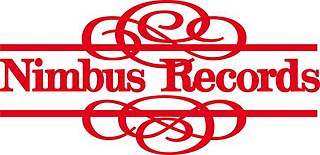
A microphone array is any number of microphones operating in tandem. There are many applications:

A microphone, colloquially called a mic or mike, is a transducer that converts sound into an electrical signal. Microphones are used in many applications such as telephones, hearing aids, public address systems for concert halls and public events, motion picture production, live and recorded audio engineering, sound recording, two-way radios, megaphones, and radio and television broadcasting. They are also used in computers for recording voice, speech recognition, VoIP, and for other purposes such as ultrasonic sensors or knock sensors.

Quadraphonic sound – equivalent to what is now called 4.0 surround sound – uses four audio channels in which speakers are positioned at the four corners of a listening space. The system allows for the reproduction of sound signals that are independent of one another.

Ambisonics is a full-sphere surround sound format: in addition to the horizontal plane, it covers sound sources above and below the listener.

Surround sound is a technique for enriching the fidelity and depth of sound reproduction by using multiple audio channels from speakers that surround the listener. Its first application was in movie theaters. Prior to surround sound, theater sound systems commonly had three screen channels of sound that played from three loudspeakers located in front of the audience. Surround sound adds one or more channels from loudspeakers to the side or behind the listener that are able to create the sensation of sound coming from any horizontal direction around the listener.
Matrix decoding is an audio technology where a small number of discrete audio channels are decoded into a larger number of channels on play back. The channels are generally, but not always, arranged for transmission or recording by an encoder, and decoded for playback by a decoder. The function is to allow multichannel audio, such as quadraphonic sound or surround sound to be encoded in a stereo signal, and thus played back as stereo on stereo equipment, and as surround on surround equipment – this is "compatible" multichannel audio.

Nimbus Records is a British record company based at Wyastone Leys, Ganarew, Herefordshire. They specialise in classical music recordings and were the first company in the UK to produce compact discs.

Blumlein pair is the name for a stereo recording technique invented by Alan Blumlein for the creation of recordings that, upon replaying through headphones or loudspeakers, recreate the spatial characteristics of the recorded signal.

There are a number of well-developed microphone techniques used for recording musical, film, or voice sources or picking up sounds as part of sound reinforcement systems. The choice of technique depends on a number of factors, including:
The Trifield process is a form of audio rendering in which a conventional two-channel signal is decoded to an additional number of loudspeakers, typically three in the form of a Left-Centre-Right front stage. The technique provides significant additional image stability, especially when the listener is moving or off-axis.
Ambisonic UHJ format is a development of the Ambisonic surround sound system designed to be compatible with mono and stereo media. It is a hierarchy of systems in which the recorded soundfield will be reproduced with a degree of accuracy that varies according to the available channels. Although UHJ permits the use of up to four channels, only the 2-channel variant is in current use. In Ambisonics, UHJ is also known as "C-Format".
Michael Anthony Gerzon is probably best known for his work on Ambisonics and for his work on digital audio. He also made a large number of recordings, many in the field of free improvisation in which he had a particular interest.
This page focusses on decoding of classic first-order Ambisonics. Other relevant information is available on the Ambisonic reproduction systems page.

The H2 Handy Recorder is a handheld digital audio recorder from Zoom first announced at the NAMM tradeshow in February 2007. It records very high quality digital stereo or 4-channel audio on a hand-held unit, and has been called "the studio on a stick."

Røde Microphones is an Australian audio technology company that designs and manufactures microphones and related accessories, audio interfaces and consoles, and audio software. It is recognised as a world-leader in several audio categories across consumer, prosumer and professional markets, specialising in products for music recording, location sound recording, broadcast and podcasting, filmmaking, and content creation.
Ambiophonics is a method in the public domain that employs digital signal processing (DSP) and two loudspeakers directly in front of the listener in order to improve reproduction of stereophonic and 5.1 surround sound for music, movies, and games in home theaters, gaming PCs, workstations, or studio monitoring applications. First implemented using mechanical means in 1986, today a number of hardware and VST plug-in makers offer Ambiophonic DSP. Ambiophonics eliminates crosstalk inherent in the conventional stereo triangle speaker placement, and thereby generates a speaker-binaural soundfield that emulates headphone-binaural sound, and creates for the listener improved perception of reality of recorded auditory scenes. A second speaker pair can be added in back in order to enable 360° surround sound reproduction. Additional surround speakers may be used for hall ambience, including height, if desired.

In sound recording and reproduction, audio mixing is the process of optimizing and combining multitrack recordings into a final mono, stereo or surround sound product. In the process of combining the separate tracks, their relative levels are adjusted and balanced and various processes such as equalization and compression are commonly applied to individual tracks, groups of tracks, and the overall mix. In stereo and surround sound mixing, the placement of the tracks within the stereo field are adjusted and balanced. Audio mixing techniques and approaches vary widely and have a significant influence on the final product.
The design of speaker systems for Ambisonic playback is governed by several constraints:
The Oxford University Tape Recording Society (OUTRS) was a student's club of recording enthusiasts that has existed from at least 1966 until at least 1976. Among its members were AES fellow Michael Gerzon and Peter Craven, co-inventors of the Soundfield microphone, Nimbus Records director Jonathan Halliday and sound engineer and prolific Ambisonic recordist Paul Hodges.












